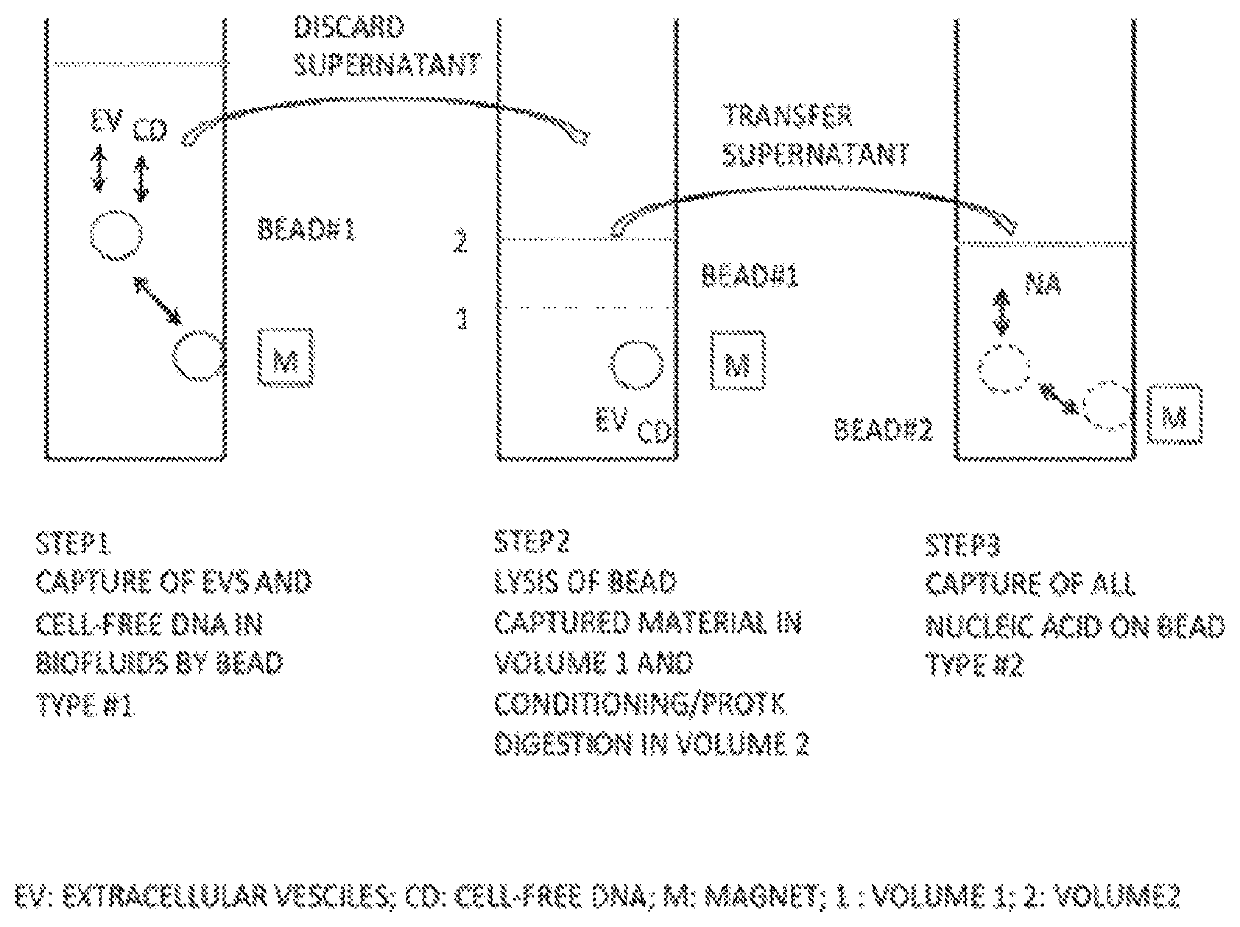Automated and manual methods for isolation of extracellular vesicles and co-isolation of cell-free DNA from biofluids
a technology of extracellular vesicles and manual methods, which is applied in the direction of organic chemistry, chemistry apparatus and processes, and sugar derivates, etc., can solve the problems that not all are equally well suited to every application, and achieve the effects of reducing intramolecular disulfide bonds, and reducing the number of vesicles
- Summary
- Abstract
- Description
- Claims
- Application Information
AI Technical Summary
Benefits of technology
Problems solved by technology
Method used
Image
Examples
Embodiment Construction
[0096]The present invention provides methods of isolating cell-free DNA (cfDNA) and / or cfDNA and nucleic acids including at least RNA from microvesicles by capturing the DNA and the microvesicles to a surface, subsequently lysing the microvesicles to release the nucleic acids, particularly RNA, contained therein, and eluting the DNA and / or DNA and nucleic acids including at least RNA from the capture surface. Microvesicles are shed by eukaryotic cells, or budded off of the plasma membrane, to the exterior of the cell. These membrane vesicles are heterogeneous in size with diameters ranging from about 10 nm to about 5000 nm. All membrane vesicles shed by cells<0.8 μm in diameter are referred to herein collectively as “microvesicles.” These microvesicles include microvesicles, microvesicle-like particles, prostasomes, dexosomes, texosomes, ectosomes, oncosomes, apoptotic bodies, retrovirus-like particles, and human endogenous retrovirus (HERV) particles. Small microvesicles (approxima...
PUM
| Property | Measurement | Unit |
|---|---|---|
| volume | aaaaa | aaaaa |
| pore size | aaaaa | aaaaa |
| pore size | aaaaa | aaaaa |
Abstract
Description
Claims
Application Information
 Login to View More
Login to View More - R&D
- Intellectual Property
- Life Sciences
- Materials
- Tech Scout
- Unparalleled Data Quality
- Higher Quality Content
- 60% Fewer Hallucinations
Browse by: Latest US Patents, China's latest patents, Technical Efficacy Thesaurus, Application Domain, Technology Topic, Popular Technical Reports.
© 2025 PatSnap. All rights reserved.Legal|Privacy policy|Modern Slavery Act Transparency Statement|Sitemap|About US| Contact US: help@patsnap.com

